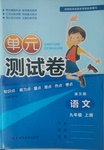题目内容
【题目】 Although books are still popular with teenagers, most of them spend more of their leisure time staring at their phone than reading a paperbook..【1】Instead of publishing whole book at once, they produce very short chapters, which they send once a week to their readers by text message.
【2】Many are written by high school or university students who are very familiar with the topics that teenagers are interested in. Common themes are love, tragedy and betrayal, and the stories often deal with difficult or controversial issues.
Twenty-one-year-old Rin wrote her novel over a six-month period in spare moments, often while commuting on the train.【3】Her book sold 40000 copies and was number five in the Japanese bestseller list. Rin said that her mother had had no idea that she had been writing a novel and was therefore very surprised when she saw a book with her daughter's name on it
【4】Chapters have no more than 200 words, and often just 50-100 words. Sentences are short and there are no descriptions of anything or anybody because there isn't space. The text mostly consists of dialogue and the language is direct, conveying a lot in a few words.
In 2009, a young Japanese writer called Takatsu, who lives in Canada, began writing the first English language cell phone novel, Secondhand Memories. Takatsu had read an English translation of Rin’s story and had been impressed by its simple and emotional language. It was a feature he deliberately copied when he started writing Secondhand Memories.【5】He now believes that, in English, cell phone novels have a powerful and poetic identity of their own. Cell phone novels encourage young people to engage in fiction, even those who would not normally pick up a book. They could be described as ten novels for the 21st century.
A. Books are sometimes regarded as old-fashioned and difficult to read.
B. In response 10 this trend, some smart young authors have changed the way they write.
C. However, as the story progressed, the style gradually evolved into something different.
D. She typed out chapters on her phone and uploaded them onto a popular website for cell phone authors.
E. No money is made from cell phone novels unless they are published as books.
F. The style of cell phone novels has evolved to suit the medium.
G. Although the idea originated in Japan, cell phone novels have also appeared in the rest of world.
【答案】
【1】B
【2】G
【3】D
【4】F
【5】C
【解析】
这是一篇说明文。主要介绍了手机小说这一新型的小说形式,作家们不是一次出版整本书,而是制作非常短的章节,每周通过短信发送给读者。同时介绍了两位作家写手机小说的情况。
【1】根据后文Instead of publishing whole book at once, they produce very short chapters, which they send once a week to their readers by text message.可知他们不是一次出版整本书,而是制作非常短的章节,每周通过短信发送给读者。由此可知,面对青少年如今长时间看着手机,一些作家为了应对这一趋势改变了自己的写作方式。故B选项“作为对这一趋势的回应,一些聪明的年轻作家改变了他们的写作方式”符合上下文语境,故选B。
【2】结合后文Many are written by high school or university students who are very familiar with the topics that teenagers are interested in.可知许多是由高中生或大学生写的,他们非常熟悉青少年感兴趣的话题。由此可知,下文是在说明手机小说出现的地点和创作者,故G选项“手机小说虽然起源于日本,但也出现在世界其他地方”符合上下文语境,故选G。
【3】根据上文Twenty-one-year-old Rin wrote her novel over a six-month period in spare moments, often while commuting on the train.可知21岁的Rin在业余时间写了6个月的小说,通常是在乘火车上下班的时候写的。由此可知,本句承接上文继续说明Rin写作的事情。D选项中she指代上文中的Rin。故D选项“她用手机打出了一些章节,并把它们上传到一个流行的手机作者网站上”符合上下文语境,故选D。
【4】结合后文Chapters have no more than 200 words, and often just 50-100 words. Sentences are short and there are no descriptions of anything or anybody because there isn't space. The text mostly consists of dialogue and the language is direct, conveying a lot in a few words.可知章节不超过200字,通常只有50-100字。句子很短,没有对任何事物或任何人的描述,因为没有空格。文本以对话为主,语言直接,言简意赅。由此可知,本段是在说明手机小说所具有的风格更加言简意赅,与媒体的风格类似。故F选项“手机小说的风格已经进化到适合媒体”符合上下文语境,故选F。
【5】根据后文He now believes that, in English, cell phone novels have a powerful and poetic identity of their own.可知他现在相信,在英语中,手机小说有着自己强大而富有诗意的身份。由此可知,Takatsu从一开始的模仿到后来风格逐渐变成了不同的东西,这让他对手机小说的看法有了改变。故C选项“然而,随着故事的进展,风格逐渐演变成不同的东西”符合上下文语境,故选C。

 阳光试卷单元测试卷系列答案
阳光试卷单元测试卷系列答案